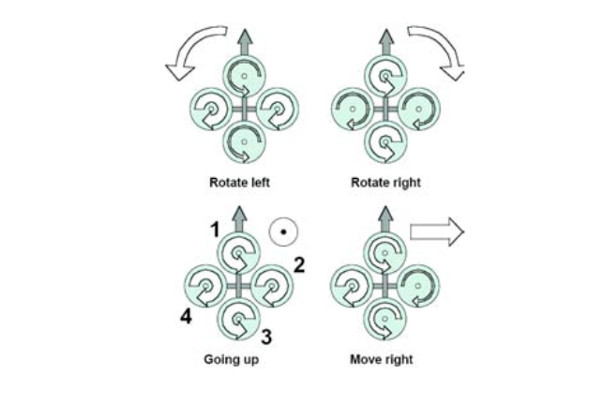 http://blog.tkjelectronics.dk/2012/03/quadcopters-how-to-get-started/ How does a quadcopter even fly? Quadcopters use four motors with
four propellers to create thrust to give the aircraft
lift. Two of the motors rotate counter clockwise and
the other two rotate clockwise. This configuration
cause the torque from each motor to cancel by the
corresponding motor rotating the opposite direction
.What is very different about quadcopters from other
vertical take off and landing aircraft (VTOL) is that
in order to control pitch, yaw, and roll the pilot
uses variable thrust between the four motors. For
example, the image below helps to illustrate which
motors a pilot would have to speed up or slow down in
order to maneuver. If he wanted to move right, he
would decelerate his far right motor, accelerate his
far left, and keep the two motors parallel to
direction of motion at a constant speed.
 Most of what makes quadcopters even
possible for novice pilots to fly is the breakthroughs
in small micro controller technology. In the beginning
quadcopters had large pilot workloads to fly because
each motor had to be individually controlled
simultaneously. With today's technology, computerized
flight controllers with algorithms can make the on the
fly decisions for the pilot based on his input via the
radio controller sticks and controls. Below is an
illustration of what the electrical looks like in a
typical modern quadcopter.
 Quadcopters and other unmanned
vehicles come with added bonuses with added caveats.
They may be easier to fly now with new technology, but
because the pilot is not on board the aircraft, this
adds many other challenges in regard to situational
awareness. Many quadcopters are outfitted with on
board cameras to give the pilot first person
perspective when flying. However, even with optics
many precautions still must be taken to ensure a safe
flight such as pre-planning routes, making obstacle
maps, and being within line of sight in order to make
the best judgement calls.
|